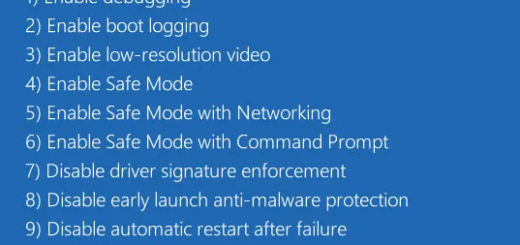Install SQL Server 2008 R2 on Server 2012 R2
How to install and configure Microsoft SQL Server 2008 R2 on Windows Server 2012 R2, including Microsoft SQL Server Studio.
This guide provides a step-by-step procedure for installing SQL Server 2008 R2 on Windows Server 2012 R2, including the Microsoft SQL Server Studio. Despite being an older version, SQL 2008 R2 remains a popular choice and is still supported by Microsoft (as of the time of writing).
Prerequisites:
- A copy of Microsoft Windows Server 2012 Standard R2 (64-bit edition).
- A copy of Microsoft SQL Server 2008 Standard R2 (64-bit edition).
- Valid licences for both SQL and Windows.
Step 1: Preparing Windows Server for SQL 2008 Installation
- Install .NET Framework 3.5, as it’s a prerequisite for Windows Server 2012 R2.
- Open Server Manager > Manage > Add Roles and Features Wizard.
- Choose Role-based or feature-based installation.
- Select the local server from the server pool.
- Navigate to Select Features and choose .NET Framework 3.5 Features.
- Insert the Windows Server 2012 R2 media.
- On the Confirm installation, select “specify an alternative source path”.
- Input the source path, typically
Z:\Sources\SXS(adjust based on your DVD Drive letter). - Click OK and Install.
Note: Ensure you point to the .NET 3.5 source files on the Windows Server 2012 media to avoid installation failure.
"error installing microsoft net framework 3.5 sql server"Details:
- From Server Manager, select Manage and then Add Roles and Features Wizard.
- Select Role-based or feature-based installation.

- On the Select Destination, Server screen choose the local server from the server pool

- Skip to Select features and choose .NET Framework 3.5 Features

- Next, insert the Windows Server 2012 R2 media into the Server.
- On the Confirm installation selects select specify an alternative source path

- The source path is usually Z:\Sources\SXS
- (whichever Drive letter you have mapped the DVD Drive to).
- (For the example below the source DVD was the D:)

- Click OK and Install

This completes the installation of the .NET 3.5 Framework. The installation will take several minutes. No reboot is required.
Note: If you do not point the source files of .NET 3.5 to the Windows Server 2012 media, the installation will fail, and the SQL Server will also fail to install.
Step 2 – Installing SQL Server
- Insert the SQL Server 2008 R2 Media.
- Run Setup from the DVD.
- Select Installation > New installation or add features to an existing installation.
- Follow the on-screen prompts, enter the product key and accept the licence terms.
- Choose SQL Server Feature Installation and select all instance features.
- Configure directories, instances, servers, and other settings as detailed in your original procedure.
- Complete the installation.
Details:
- Insert SQL Server 2008 R2 Media into the server.
- Run Setup from DVD.
- Select Installation then select New installation to add features to an existing installation.

- A pre-installation server test will now run.
- Click next after the pre-test completes.
- Enter product key.

- Accept the Licence terms and conditions.

Click install to set up support files.

- Click Next and then select SQL Server Feature Installation

- Select ALL instance features (This has been requested in advance by the customer).
- Ensure Shared Feature Directories are pointing to the D:\ Drive.
- Click next

- On Instance Configuration, leave as the Default instance, click next

- On the Server configuration screen, change the account Name to NT AUTHORITY\SYSTEM. No Password is required. This will be changed by the customer after handover

Important :
- On Database Engine Configuration ensure you select
- Mixed Mode (SQL Server authentication and Windows authentication).
- Input the pre-defined password (this is for the SA account).
- It is also advised to add the local administrator as a SQL Admin in the Specify SQL Server administrators section.

- Under the Data Directories tab ensure you chose:
- S:\ for Database files
- L:\ for Logs

- On the Analysis Services configuration, add the Current User
- (This can be changed by the customer later in SQL Server Management Studio)

- Under Reporting Services Configuration select “install, but do not configure the report server” – (This can be changed by the customer later in SQL Server Management Studio)

- On the next screen, Error Reporting, ensure the tick box is blank and click next

- Click Next to bring up the final screen “Ready to install” and chose INSTALL


- The installation will take about 15 minutes to complete.
- Once completed, open SQL Server Management Studio and log in with the Mixed Mode SA account you created earlier.

Post-Installation:
Accessing and Updating SQL Server Management Studio (SSMS):
- Logging In:
- Launch SQL Server Management Studio (SSMS).
- Log in using either the ‘SA’ account or ‘Administrator’ credentials.
- Verifying SQL Server Status:
- Confirm that SQL Server is operational by locating a green “play” icon.
- Security Updates:
- To ensure your SQL Server is secure and up-to-date, apply the latest patches using Windows Update.
Details:
- Log in with SA account or Administrator

- Expand the column on left, if you have a green “play” button SQL is running

- Upon completion, it is recommended that you update SQL using Windows Update.
If you prefer MySQL or MariaDB, check out this guide for all your Linux sysadmin needs.
Can SQL 2008 R2 run on Windows Server 2012?
Yes, Microsoft SQL Server 2008 R2 can run on Windows Server 2012 Standard Edition. However, it’s crucial to note that Microsoft officially terminated support for SQL 2008 R2 on 19th July 2019. Despite this, the continued high traffic to related pages indicates its widespread use globally.
For businesses that continue to rely heavily on SQL Server 2008 R2, Microsoft offers a solution:
- Migrate your server to Microsoft Azure to receive free security updates.
- If migration isn’t an option, you can directly purchase these updates from Microsoft, though it might be a costly affair.
For more details on this topic, refer to Microsoft’s official statements and guidelines.
This is what Microsoft has to say on the issue:
In Azure: Customers running 2008 or 2008 R2 versions of SQL Server and Windows Server in Azure virtual machines will get Extended Security Updates for free.
On-premises: Customers with active Software Assurance or subscription licenses can purchase Extended Security Updates annually for 75 percent of the full license cost of the latest version of SQL Server or Windows Server. Customers pay for only the servers they need to cover, so they can reduce costs each year as they upgrade parts of their environment.
https://azure.microsoft.com/en-us/blog/announcing-new-options-for-sql-server-2008-and-windows-server-2008-end-of-support/




Recent Comments